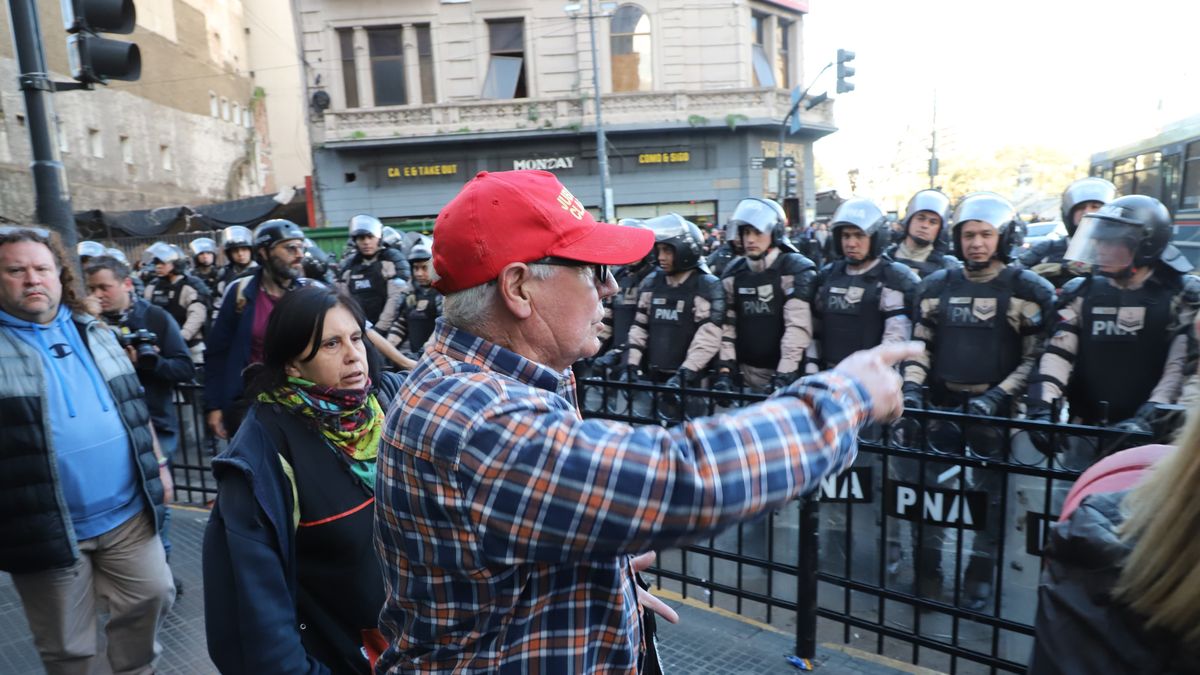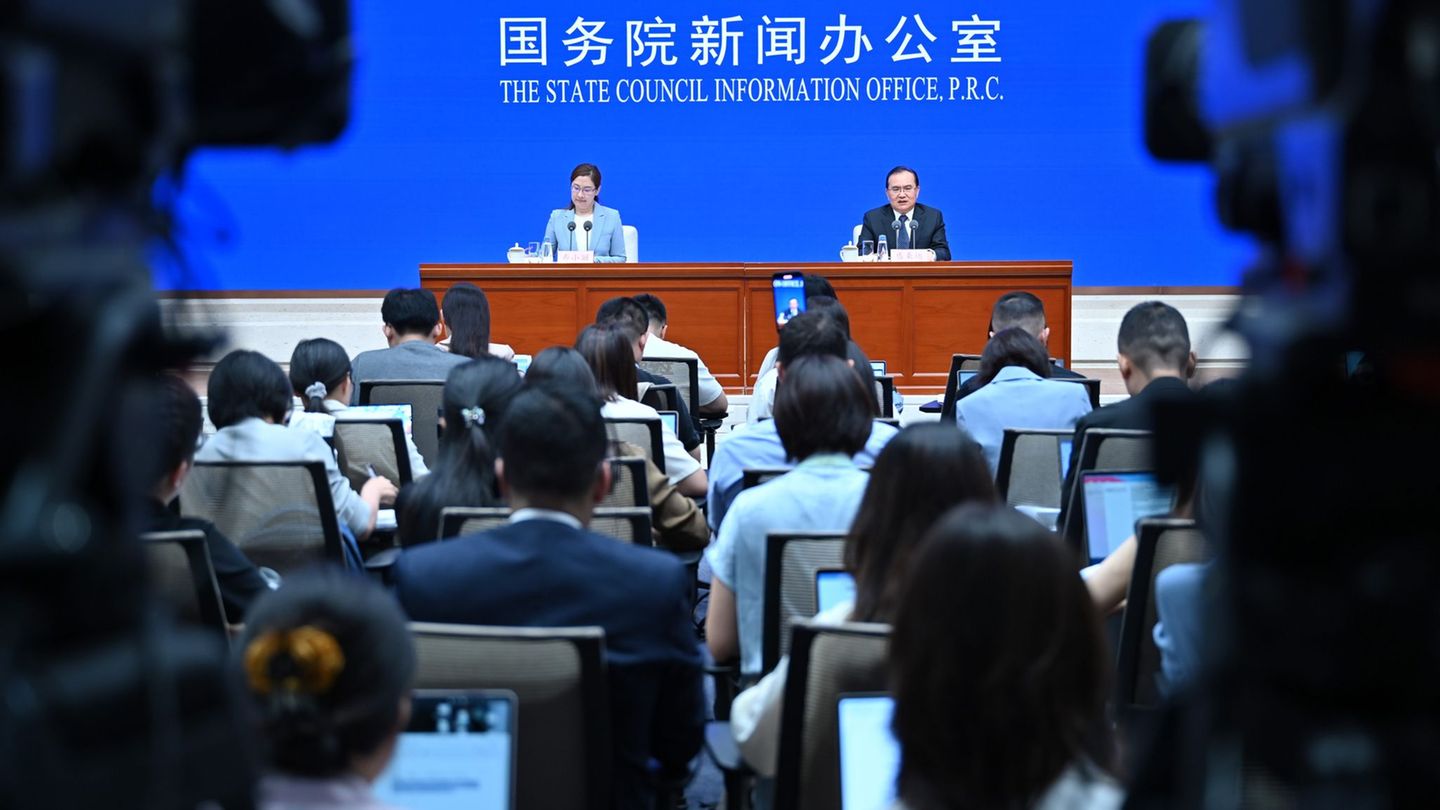In any case, the joke served to put on the table the question of what the Government is doing and what it wants to do with this 12% of Argentines, of which more than half (54%) receive the minimum pension, and just over a quarter (1.5 million people) continue to workmostly in order to survive (only 73,500 work in formal occupations, 250,000 are self-employed and the rest work in unregistered tasks).
Milei doesn’t lie, but almost
Since the people of La Libertad Avanza took office in December, the minimum pension has grown by 49% if we measure it in free dollars, the maximum pension by 74% and the average pension by 84%. The President even went so far as to argue that the minimum pension is 16% above the historical average for 1983-2024. So the fact that the dollars have “flown” is still true.
Minimum retirement in free dollars, we are above the historical average but inflation is lacking usa.jpg
The president is right in saying that retirement has “flown” in dollars, even if this is a fallacy
Of course, Milei ignores the fact that a dollar today is not the same as a dollar yesterday. If we deflate the minimum pension by the American CPI, the current one is 11% below the historical average.
But the real problem with these comparisons is that Argentines spend in pesos and in pesos the outlook is undoubtedly different.
Minimum retirement in deflated dollars 193 by CPI USA.jpg
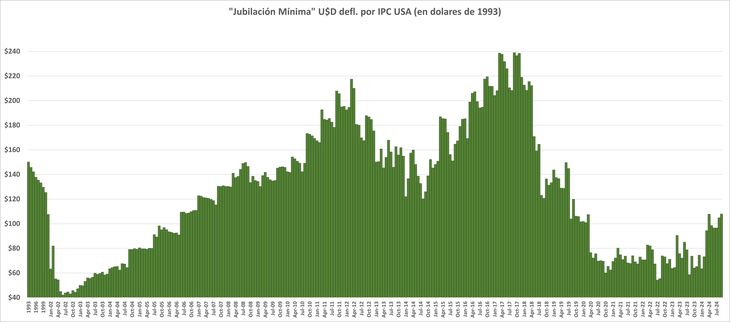
In “real” dollars, the minimum is 11% below the average and worse than during the period 2006-2019
Deflating by the CPI, the minimum retirement pension for September would be In constant values, 6% below what was received last December, the maximum 10% above and the average would have increased 16%.
What we see here is that the Government has decided to favour firstly the increase in intermediate pensions and secondly the increase in maximum pensions, at the cost of punishing those who receive the minimum.
Minimum pension deflated by CPI Indec or Congress.jpg
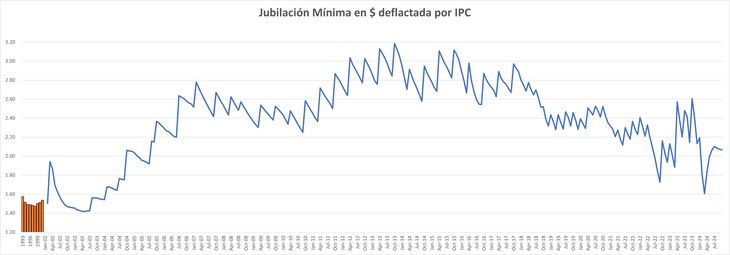
In real terms, the minimum pension is 15% below its historical average.
Why “punish” poor retirees and reward the “rich” ones? When we look back, we see that in March 2023 the Alberto Fernández administration decided to “prioritize/favor” minimum pensions at the expense of higher ones. From 7 “minimum” pensions that it averaged since 2017, the “maximum” reduced the differential to 5 (last December it fell to 4.3). With average pensions, although less evident, the path was similar, from 1.6 times the reduction was 1.1
The trap is increasing the highest pensions, which were already severely punished.jpg
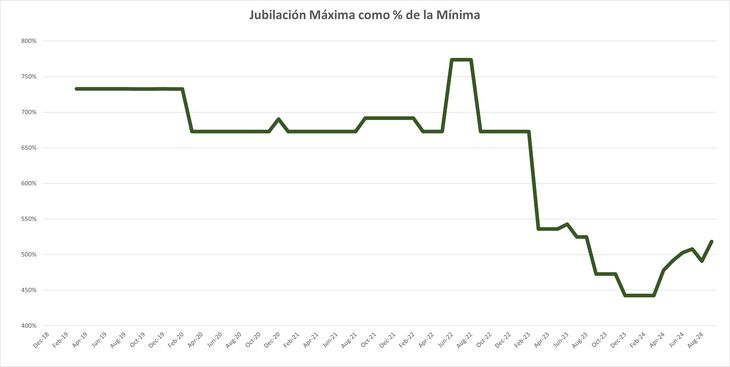
Alberto Fernández favored minimum pensions and Javier Milei supports medium and high pensions
What Milei’s decrees are doing is, in some way, redirecting retirement scales to historically “more normal” parameters at the cost of, unfortunately, punishing those who earn the least.
A priori we cannot rule out these movements an electoral issue for both sides. While the previous administration chose to favor its “lower class” voter base, the current one is rewarding the “upper class” and especially the “middle class.”
Retirees on the Argentine population.jpg

The Kirchners increased the number of retirees, making the system insolvent
In December 2005, Néstor Kirchner created the “Housewives’ Retirement” scheme starting at age 50 with only ten years of contributions, which burdened the state system with almost half a million people (the vast majority of whom were middle-aged women), and in February 2007 he put an end to the “free choice” system (private savings or distribution system – in October 2008 Cristina Fernández decided to nationalise the AFJP funds), which meant that the state had to support 1.5 million more retirees.
With this, Kirchnerism had an initial injection of funds that allowed it to expand its voter base, but The cost was the insolvency of the pension system.
The blanket is short
Let’s leave aside that it is It is morally reprehensible not to return a “dignified” withdrawal to those who “contributed” to the State more than what is necessary for this, that is, the self-employed and 45% of retirees and pensioners who did not resort to any moratorium.
Milei does not starve retirees and pensions spending was reduced less than the others despite the greater impact.jpg
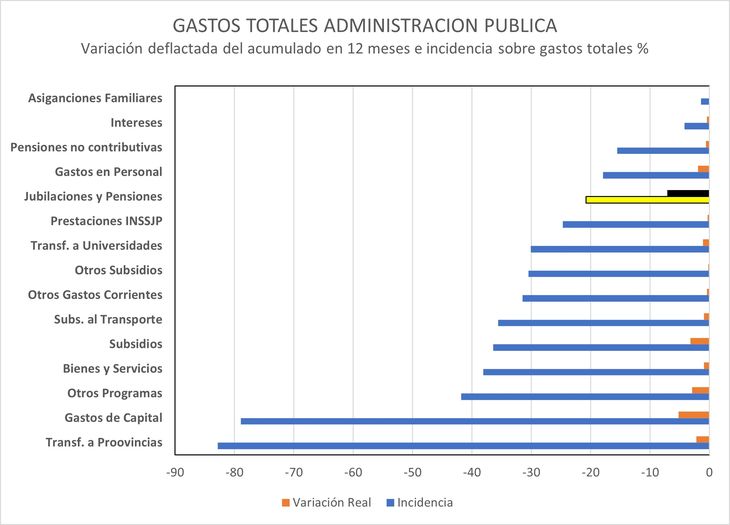
The reduction in pension spending is among the most limited by the new Administration
The Government is committed to a plan to reduce public spending that also affects the retirements and pensions and if we look at the numbers we can see that despite being the item with the highest incidence in the budget, it is one of those who suffered the least “punishment”. In fact, as a share of current expenditure, the amount spent on retirement and pensions is in line with the historical average of the last seven years.
Beyond the fact that libertarians have no incentive to favor those who vote for the opposition (in the last election, nearly 60% of retirees and pensioners – mostly with “the minimum” – opted for Sergio Massa), it is then difficult to build the case that Javier Milei has an ideological issue against “the old people.”
In reality, Milei is not starving retirees, she is reducing the money that is returned to them less than the current expenses.jpg
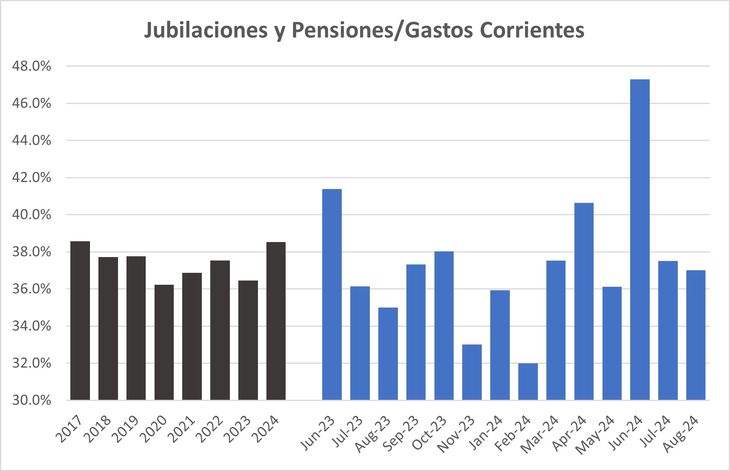
It can be argued that Milei has not intentionally reduced spending on pensions
It would seem then that by not having funds to favor “its natural electorate” What the Executive is doing is “pulling the blanket”, which is short, accepting the idea that with this, to which we can add the Veto to the increase in pensions and retirement benefits of Congress, the minimum pensioners will turn against him.
“Retirees (cannot) hold out”
If we compare what was paid to those in the lower scale in the last month with the average salaries (RIPTE), we see that it was 4% above the norm since 1994, and if we deflate by the Consumer Price Index prepared by INDEC (and at the time by Congress) it is barely 15% below the historical norm.
Minimum as % of RIPTE.jpg
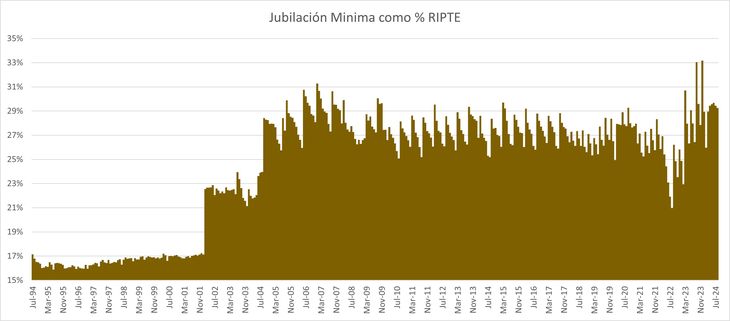
In the face of RIPTE, retirements during the Milei era are not bad
This gives the impression that they are not being starved, at least not much more than in the past, that they are holding on and that there will be time to update the disbursements when we are closer to election time.
For this The Executive seeks to maintain its discretionary power over pensionswhich explains the anger at the failure to approve a law that, despite the fact that it changes little in terms of numbers, takes away this power.
The problem is that the CPI is far from reflecting the day-to-day reality of Argentines, much less that of a pensioner who receives the minimum. This was acknowledged days ago by Marco Lavagna who announced that in a couple of months he will announce the modifications to the algorithm for calculating the cost of living.
Without underestimating the effort and work, which surely reflects many of the changes in consumer habits (increasing the weight of technology), It will hardly be enough to capture the new increase in the weight of services in the consumer basketwhich is supposed to be temporary until income improves.
Spending on services on Minimum and average retirement.jpg
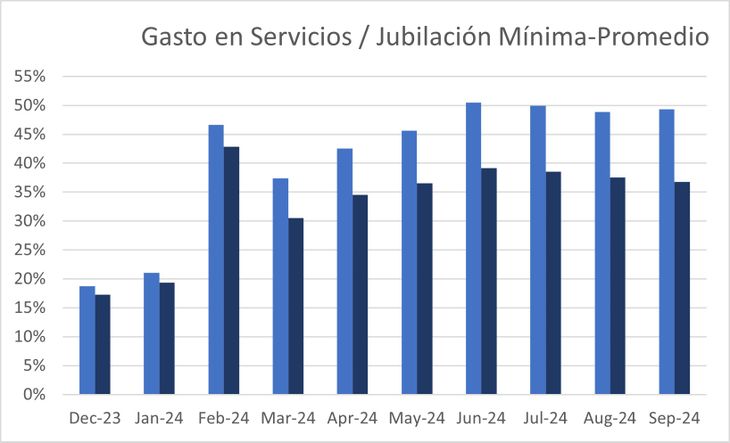
A pensioner with the minimum income spends 50% of his income on paying for basic services: light, water and electricity
Last December, an average retiree had to allocate 17% of what he received to the costs of electricity, gas and water. Last month it was 37% (for those with the minimum 49%). We don’t have the numbers yet, but this month, the situation only promises to get worse with the increase we’re seeing in electricity rates.
The point is not that retirees earn less or more than before, but that they now have much less money available – to the point that they have nothing left – for their other expenses: health, food, transportation, housing and recreation, so their situation is objectively much worse than in the past.
As the president said, in these months “the purchasing power of retirees” “flew,” but not toward heaven as he wanted to imply, but rather “flew through the air”.
Source: Ambito

